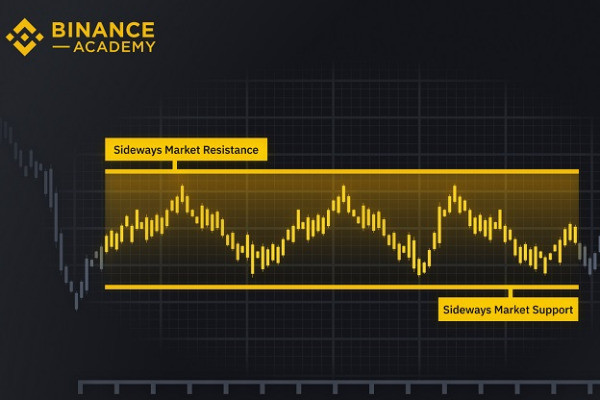What is the best cryptocurrency hedging strategy? Is it portfolio diversifications? Or is it short-selling? What do you need to consider before hedging?
The term hedging is not unfamiliar for those actively investing in the market. In fact, it's a useful practice that all investors and traders should consider. Hedging is popular among those who invest in high-risk instruments, particularly cryptocurrency. As a matter of fact, extreme volatility in the crypto market requires investors to hedge their assets in order to protect their funds.
Contents
Understanding Hedging
Before we jump into what kind of cryptocurrency hedging strategy you could apply, let's understand hedging a little bit more. The simplest way to understand this practice is to think hedging as insurance. When people decide to hedge their assets, that means they are protecting their funds from the negative impact they might get from the market. This doesn't necessarily prevent bad events from happening, but it sure reduces the risk they may cast upon your assets.
Hedging techniques generally involve two instruments in order to protect the funds. The instruments are mostly the ones with negative correlations. For example, gold and USD are believed to move inversely, which means when the USD price is going up, gold is expected to fall and vice versa. So if you invest in USD and would like to protect your funds from the risk of a total loss, you can invest in gold as well. That way when the USD goes down, there is a chance you still can profit from gold.
Why Cryptocurrency Hedging Is Important
There are many reasons why hedging is important in the crypto market. The main reason is the volatility risk in the crypto market. Yes, volatility can be a gateway to big profit, but it can also become a huge disadvantage. The sharp and sudden price swings can lead you to lose a lot of money in a matter of seconds. For example, DOGE was rising from around $0.008 to about $0.08 in January 2021. However, the price plummeted to 72% the very next day. Imagine how much you can lose in one day if you put all of your investments in DOGE.
There are also other risks in regard to cryptocurrency. As the assets were created with decentralization in mind, there is a lack of regulatory standards for every party involved. Crypto is not subject to requirements, restrictions, and guidelines that traditional markets have to follow. This means crypto traders have little to no protection in case of market turmoils or other unexpected events that may cause financial loss.
See Also:
Hedging Preparations
Before trying a cryptocurrency hedging strategy, there are some steps you need to do:
- Make sure to conduct research before you apply any cryptocurrency hedging strategy. It's also important to study how to read and analyze price charts.
- Learn how to trade on a cryptocurrency exchange. Choose a crypto exchange that provides demo trading so you don't waste too much money on trying out the hedging strategy.
- Once you get the hang of it, start hedging on the real account in small amounts. If the practice brings good results, move slowly to a bigger position later.
You should also mind these hedging key points:
- Positions: Make sure to open a position that is the opposite of your current position. That way, when your first position falls through due to the price movement, you can protect your account by gaining from the other position.
- Liquidity: Always look closely into a new assets' liquidity to determine the market integrity, transaction speed, and market fluidity. This will allow you to exchange assets for cash quickly with less slippage.
- Get out: If you aren't sure about your hedging strategy, it's always okay to exit the market. Sometimes closing your positions is a safer option to reduce loss.
Types of Cryptocurrency Hedging Strategies
Cryptocurrency hedging is not an isolated investment strategy in itself, rather the utilization of various other risk management strategies. There are plenty of cryptocurrency hedging strategies that you can do to mitigate the market risk. Here's a few of them:
1. Diversification
The simplest form of cryptocurrency hedging strategy is diversifying your portfolio. Having a diverse portfolio means purchasing various crypto assets instead of investing all the funds in one cryptocurrency. In a diverse portfolio, each cryptocurrency acts as a hedge to one another. As a result, when the price of a token falls, the overall loss will be lower because they're moderated by gains from the other tokens in your portfolio.
The general idea is to invest in several cryptocurrencies that don't tend to move in the same direction. The best scenario is when you manage to create a fully diversified portfolio where the instruments are non-correlated assets. That being said, it might be difficult for crypto traders. The crypto market is relatively new, prone to market rumors, and is easily influenced by Bitcoin price movement. The assets can be pretty similar and tend to move in the same directions, so it might be difficult to create a good portfolio.
Consequently, it's better for you to add other instruments outside of the crypto market. Conduct your own research of which assets are good to be included in your portfolio. Generally, a good portfolio should have a balanced mix of different coins which combine reputable coins (BTC, ETH) and other altcoins. You can also add safe-haven assets like gold and USD in the event of a cryptocurrency market crash.
2. Short-Selling
For more advanced traders, short-selling can be an effective cryptocurrency hedging strategy. Short-selling refers to the act of selling a particular asset when you believe that the price of the said asset will soon drop and then repurchase it at a lower price. The goal is to gain profit from the difference in price. Short-selling allows investors to hedge against the downside risk of long positions in the same instrument.
To do this, you need to analyze the price chart of a specific cryptocurrency. For example, you can use divergence analysis to determine the sign of potential trend reversal. There are two ways of short-selling in crypto trading. The traditional short-selling is when you borrow a certain amount of token from your broker, credit platform, or other third parties, then sell the crypto and repurchase it at a better price. There is also margin trading where you can borrow from a broker to make a trade. However, remember that exchanges that allow margin trading also offer leverage, which can increase potential profits or losses.
Let's say you want to short sell coin A which at $10. You want to invest in 100 coins so you need $10,000. You believe that the price will decline within a week, therefore you decide to call your broker to borrow 100 coins for short selling. Now you receive $10,000 cash flow. A week later the price of coin A drop to $7 per coin. You buy back 100 coins that will cost you $7000. That means you gain $3000 profit from the price differences.
There is a downside to this cryptocurrency hedging strategy. Hedging via short-selling might be subjected to transaction costs and margin interest. This can reduce your profit, so make sure to calculate properly before short-selling a particular cryptocurrency. This is why short-selling is not recommended for new traders.

3. Futures
Using derivatives is another common but effective cryptocurrency hedging strategy worth trying. The most popular derivatives used for crypto hedging are futures. In the crypto market, futures means a type of financial contract between two parties that have agreed to trade a particular crypto asset at a predetermined price on a specific date in the future. This increases the liquidity of investors and business owners. By using futures, you can mitigate the risk of falling prices by taking a short future position, and gain profit when the price increases by taking a long future position.
For example, you speculate that the price of Bitcoin will fall in December for some reason. So, you decide to buy a futures contract in December. You contact a seller and ask to make a futures contract that you will buy 200 coins in December with an expiration date that you and the seller agreed upon, whatever the price will be at that time. Now both of you are obligated to trade on the date stated in the contract.
There are some benefits from using futures. For once, it allows you to speculate on the market direction. It also helps to minimize your exposure and contribute to stabilizing price fluctuations. Nonetheless, as futures is usually a leveraged product, always be cautious when calculating your margin.
4. Perpetual Swaps
Perpetual swaps allow you to buy or sell the value of an underlying asset without setting an expiration date for the position you take. It also offers more buying power compared to spot trading. This cryptocurrency hedging strategy gives you a better position to take advantage of price fluctuations. They also offer greater liquidity, thus making it easier for more traders to participate.
Remember to determine your collateral's funding rate mechanism and potential returns before you start hedging with this product. Usually, perpetual swaps are traded close to the index price of the underlying asset, and they charge funding rates that are designed to ensure price stability.
5. Options
Another derivative that works for cryptocurrency hedging strategy is options. This gives you the right to buy or sell assets at a specific price or before a certain date. Despite this, the holder is not required to buy or sell the asset should they change their mind. Each contract has a specific expiration date by which the holder must exercise their option.
Options can limit the downward losses in a declining market, which is why it's good for hedging. You can also use it to speculate on the directions of a cryptocurrency. Generally, there are two kinds of options: put options and call options. Put options increase in value when the underlying asset declines, while call options are the opposite. The major downside of options is the expiration date. A long-term option can be very pricey, while short-term options may result in them expiring before you meet your targets.
Watch for Risks
Although it may seem like an easy way to protect your funds, hedging is not 100% risk-free. For starters, it does not guarantee the success of your investment, nor ensure that the risk of your investment will be always mitigated. Most hedging strategies might cost more than you think, the reason is that you have to spend more funds to open other transactions. Some of those are leveraged products that come with their own risk as well.
That being said, another problem with hedging is not all platforms allow it. So if you trade on an exchange platform, make sure they allow hedging. Some crypto exchange platforms that allow hedging are Binance and Coinbase (through short selling). There's also a distinctive platform like eToro that provides access to multiple instruments across different markets at once, creating an easier and more effective way to diversify your portfolio.
To conclude, a cryptocurrency hedging strategy can be used to protect your account from a huge loss. No matter which strategy you choose, there will be always risks that you should be careful with. Make sure to understand the advantages and disadvantages of the strategy before you apply it. If you aren't sure, exiting the market is miles better than forcing your way to make a trade. That will eventually lead to overtrading anyway.

 Dedicated FREE FOREX VPS
Dedicated FREE FOREX VPS Free FOREX Virtual Private Server
Free FOREX Virtual Private Server MT4 Demo Contest, Get $500
MT4 Demo Contest, Get $500 Sign Up for an Account, Claim 60% Deposit Bonus
Sign Up for an Account, Claim 60% Deposit Bonus Free MT4/MT5 VPS 2024
Free MT4/MT5 VPS 2024 Send E-mail and Get Free Merchandise
Send E-mail and Get Free Merchandise $1K Refer a Friend Bonus for Pepperstone Pro clients
$1K Refer a Friend Bonus for Pepperstone Pro clients Maximize Your Earnings with 100% Deposit bonus
Maximize Your Earnings with 100% Deposit bonus Trade to Win, $5,000 Monthly Demo Contest
Trade to Win, $5,000 Monthly Demo Contest Claim 30% + 15% Deposit Bonus from LiteFinance
Claim 30% + 15% Deposit Bonus from LiteFinance






 Bitcoin
Bitcoin Ethereum
Ethereum Tether
Tether BNB
BNB Solana
Solana USDC
USDC XRP
XRP Dogecoin
Dogecoin Toncoin
Toncoin Cardano
Cardano